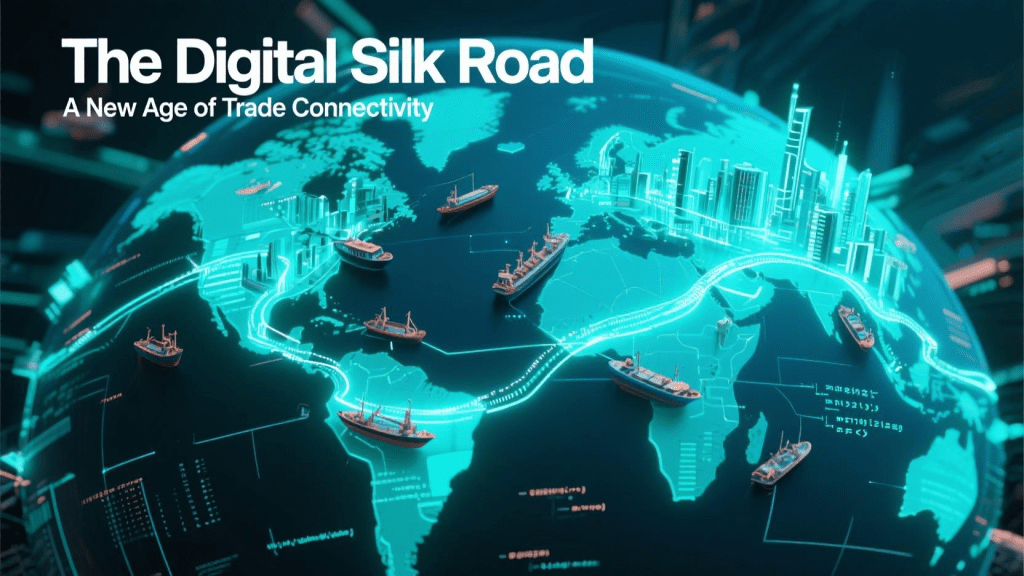As global commerce reshapes itself for the digital era, the ancient Silk Road is being reborn as the Digital Silk Road (DSR) — a lattice of broadband cables, satellite links, and digital platforms connecting nations, businesses, and people across the globe. In this new paradigm, connectivity is the currency, and data is the commodity.
The New Trade Highways
The traditional Silk Road was built with camel caravans and bustling markets. Its digital counterpart is comprised of:
-
5G and 6G mobile infrastructure that enable seamless global commerce across borders.
-
Submarine fiber cables, like the PEACE and 2Africa cables, carrying billions of terabytes of data every second.
-
Satellite internet constellations such as Starlink and OneWeb, extending connectivity to remote areas and underserved nations.
These digital highways now carry more than goods — they enable payments, supply chain analytics, and cross-border e-commerce in ways unimaginable just a decade ago.
The Impact on Trade Patterns
The Digital Silk Road has reshaped global commerce by:
✅ Shortening supply chains: Real-time analytics and AI-driven logistics optimize global transportation, making deliveries faster and cheaper.
✅ Empowering SMEs: Small businesses can now access global markets through digital platforms like Alibaba, Amazon, and Mercado Libre.
✅ Facilitating seamless payments: The rise of digital wallets and stablecoins allows for instantaneous cross-border payments, bypassing traditional banking bottlenecks.
By 2025, it’s estimated that 60% of global trade will be influenced by digital platforms and data flows, making digital connectivity as vital as the traditional ports and railways of the 20th century.
Challenges and Fractures
Yet this digital revolution is not without tensions. The splinternet — a fragmented internet shaped by national policies — threatens to carve digital borders across the global marketplace. Meanwhile, rising cyber-espionage and data sovereignty regulations complicate cross-border digital trade.
To address these issues, global institutions like the WTO and G20 are exploring digital trade rules for the first time. New regulations focus on:
-
Cross-border data flows: Ensuring seamless yet secure digital commerce.
-
Cybersecurity standards: Creating global norms to protect digital trade corridors.
-
Trust in digital infrastructure: Establishing protocols for verifying digital identities and verifying supply chains.
The Road Ahead
The Digital Silk Road is more than cables and code — it is a shift in economic gravity. In this era, nations that build resilient digital infrastructure and embrace global data standards will dominate global commerce. Conversely, those that isolate themselves risk being left behind.
As traditional trade gives way to a seamless, connected global digital marketplace, one thing is clear: the future of international commerce will be shaped not by ships and ports, but by data and connectivity — the threads of the Digital Silk Road.









